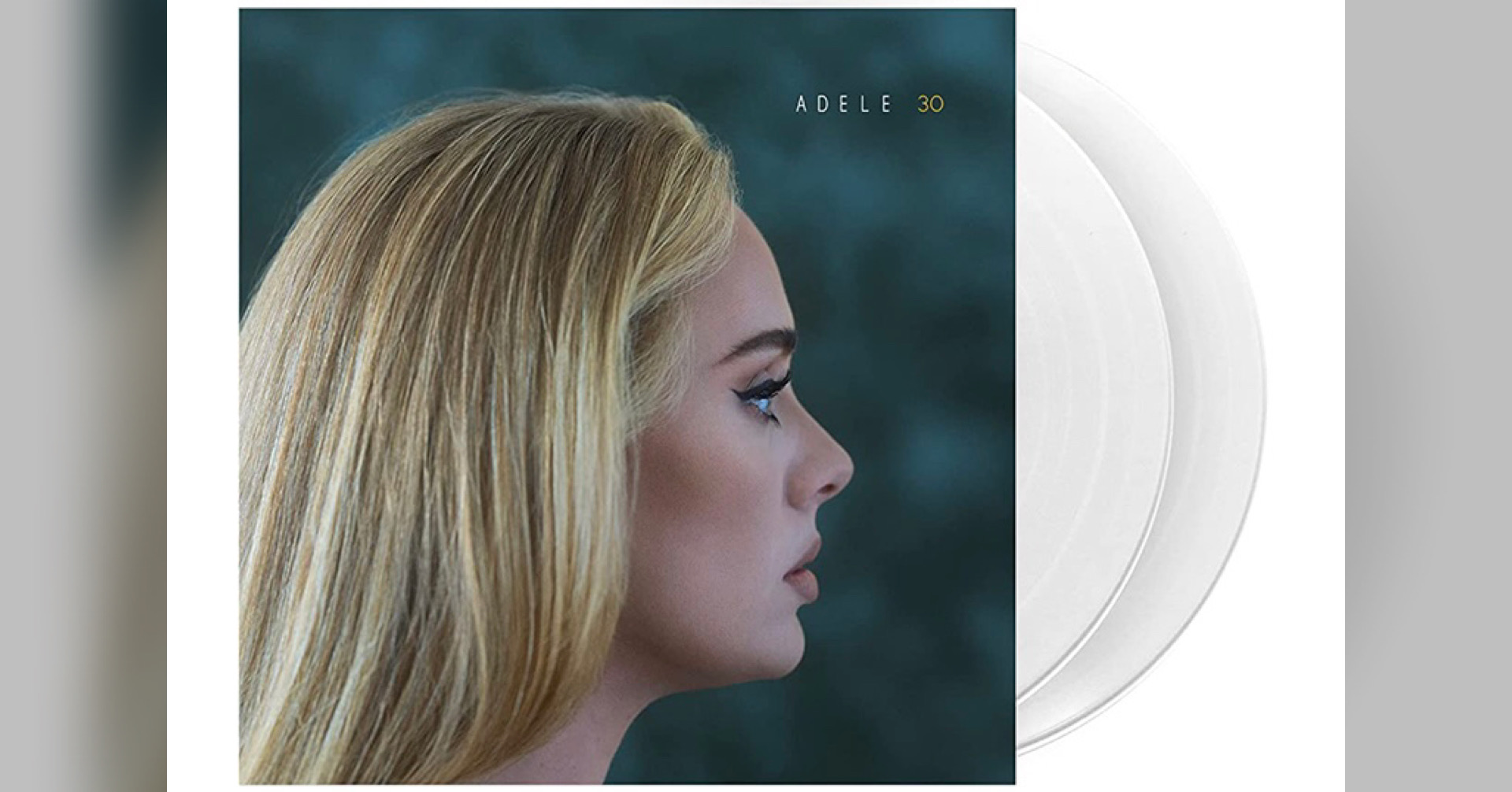(November 6, 2021). This is not the early 1980s, when vinyl record sales alone could still power a blockbuster album.
It’s also not 2015, the year Adele’s last album 25 was released and vinyl—while registering higher sales than in previous years—was still a drop in the proverbial bucket, even as that album sold more than 11 million equivalent units in the U.S. alone.

It’s 2021, and the biggest-selling artist with as few as three albums under her belt is about to release her fourth! And yes, this time vinyl is a big part of the mix…a really BIG part!
So big, in fact, that this mixmag article reported Friday (Nov. 5) that Adele’s new 30 album—due November 19–includes 500,000 copies to be pressed on vinyl. If that’s true—there’s certainly no reason to doubt it—and if all of those are domestic U.S. copies, then that would be enough for the album to be certified gold by the RIAA on its vinyl shipments alone!
Although the RIAA—the Recording Industry Association of America—didn’t release sales data for albums by individual configuration prior to the 1990s, and the industry’s more accurate point-of-sale, piece-count detection systems employed by Nielsen MRC Data (formerly SoundScan) didn’t exist before 1990, it’s likely that 30 would be the first album with this gold-by-vinyl distinction in a really long time. It’s a safe bet that, with CD and cassette sales dwarfing that of vinyl records from the mid-1980s onward, you’d be hard pressed (no vinyl pun intended) to find another album since then whose certification could be derived solely from sufficient sales of the ethylene derivative.
Of course, most readers probably know that vinyl has made a big comeback in recent years—it has seen significant year-over-year percentage increases in sales for most of the millennium, particularly while other physical configurations—namely CDs and cassettes—have suffered tremendous declines in sales. This year, for the first time in eons, vinyl unit shipments have actually exceeded those of CDs, with vinyl revenue already having surpassed CDs’ dollar intake several years ago. Several albums this year reached (or could have reached) No. 1 on the Billboard 200 chart by virtue of their one-week vinyl numbers alone (recent albums by Taylor Swift and Billie Eilish among them).
Commensurate with vinyl’s rise has been the emergence of Adele as the industry’s savior when it comes to physical record sales. Her last album sold more than 3.3 million copies in its first week alone (most of those were of the CD variety), shattering all known début-week sales records known to man and halting what had been a double-digit percentage slide in physical sales every year for the better part of this millennium.

Her new album 30 is expected to be another blockbuster—albeit perhaps not to the tune of what 25 did, as the musical landscape has changed a lot since 2015. Most music consumption now happens via music streaming services like Spotify, Amazon and Apple Music. Even digital downloads via iTunes and similar services have taken a huge hit in the past ten years with streaming taking over.
If Adele’s new album is to approach anywhere near the 3.3 million first-week units that 25 did six years ago, it will require a combination of digital downloads, song streaming, CD and cassette sales, and, yes people buying all those vinyl records, which, unlike the vinyl component for some of this year’s earlier big releases, will be available on the same day the album is made available to streaming and download services.
You know, it’s interesting that the demand for vinyl is so high these days, with Adele’s album plus Taylor Swift’s latest—Red (Taylor’s Version), Silk Sonic’s début and other superstar LPs all slated for November release. In fact, the demand is so high that record manufacturers are having a hard time keeping up with orders.
This has created problems for smaller artists and labels who clearly don’t have the big budgets that artists like Adele (or Sony Music, her label’s parent company) to get shipments to stores or product delivered to homes by Day 1 of the album’s scheduled release. With so few record pressing plants available anymore, some vinyl backlogs have been reported to be as high as nine months or more. Record-pressing plants around the world have the capacity to produce 160 million records a year, with this year’s demand more than doubling that.
Read this also: Why Adele’s new album isn’t the only thing jamming up other artists’ vinyl pressing schedules.
Perhaps that’s a good problem for the industry to have. It’s amounted to what could be $1B in revenue for vinyl records this year alone.
I just never thought we’d be saying anything like that about vinyl records in 2021…or ever again!
DJRob

DJRob (he/him) is a freelance music blogger from somewhere on the East Coast who covers R&B, hip-hop, pop and rock genres – plus lots of music news and current stuff! You can follow him on Twitter at @djrobblog.
You can also register for free (below) to receive notifications of future articles.


